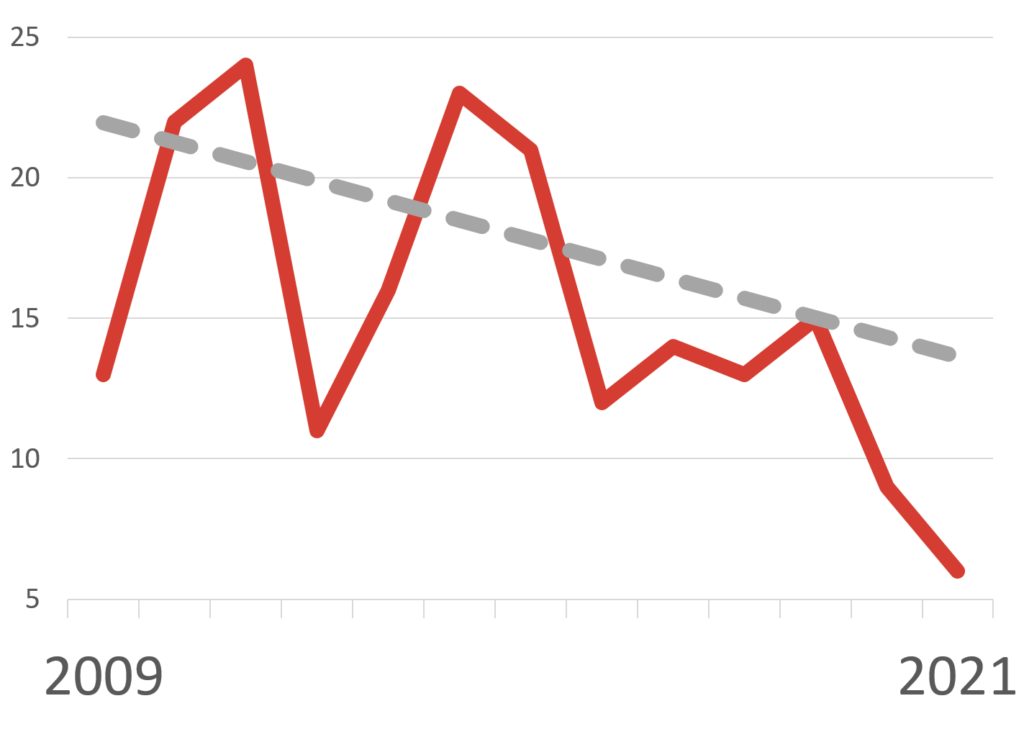
The rate of farm-related fatalities in New York may be gradually decreasing, according to the New York State Agricultural Fatality Report: 2019-2021, released by the New York Center for Agricultural Medicine and Health (NYCAMH), a Northeast Center affiliate. Deaths in the state tied to agricultural work decreased in the last three years: 21 in 2019, 15 in 2020 and seven in 2021.
The lower numbers in 2021, however, may only be a “momentary downtick,” and the percentage of childhood deaths on farms remains tragically significant, according to the recently released report. “Fatalities on farms are rare and often erratic in nature. You have to look at the numbers over a couple of decades,” explains Erika Scott, deputy director for NYCAMH. “Then you notice that they jump up and down a lot.”
The report cites the top causes of farm-related deaths from 2019-2021 as follows:
1. Tractor rollovers. Rollovers have long been a leading cause of agricultural deaths. The report, however, notes a continued drop in frequency.
2. A person coming into contact with equipment or other farm objects.
3. Road-related incidents—vehicles coming into contact with equipment or other farm objects. Collisions involving vehicles and tractors or other farm machinery on roads are nearly five times more deadly than non-agricultural crashes, according to a NYCAMH study cited in the report.
KEY FINDINGS
- Road-related crashes involving motor vehicles and farm equipment or tractors are the second leading cause of farm-related deaths.
- More than half of all farm machinery-related deaths involved minors; half were children under the age of ten. (see chart, right)
- Males continue to represent the majority of deaths.
- Most fatalities occurred at age 55 or older.
Data for the report and information on the incidents were gathered through a news clipping service’s search engine. These were then cross-referenced with fatalities from AgInjuryNews.org. Additional searches are run through the official Census of Fatal Occupational Injury. The center also tracks non-fatal agricultural injuries through Pre-Hospital Care Reports supplied by the Department of Health.

